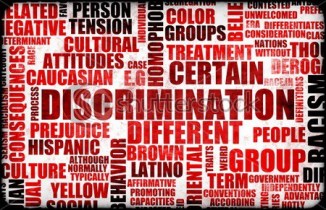Racial bias is the attitude, belief, behaviour or institutional arrangement that favours one racial group over another (Farely,1995 ). There are two main types of racism or racial bias; individual racism and institutional racism. Individual racism is the assumption that one’s own racial group is superior and rationalizes the dominance and power generally white people over black. This type of racism would be targeted at an individual’s personal beliefs (Allison and Belgrave, 2009). Whilst institutional racism is the policies and practices within organizations and institutions that contribute to discrimination for a group of people (Allison and Belgrave, 2009).
The past few years have been a huge leap in the advancements towards racial equality, however, it can also be argued that things are worse now more than ever. It is easy to distinguish few years has been a huge leap in the advancements towards racial equality, moreover, it can also be argued that things are worse now more than ever. It is easy to distinguish or notice the problems that people of colour have within the media industry if we look into various settings you can see that people of colour are not treated equally to white people.
A key example of institutional racism can be seen in South Africa during apartheid when a small number of white people ruled over black people, leading to the government controlling the interaction between different races in order to maintain control over them. White people were provided with better homes, schools and hospitals (Senker, 2009)
To think that racism or racial does not exist anymore in not accurate in fact racism exists in most societies today. For example, in the United States of America racism is still prevalent today, it could also be argued that the past few years issues concerning race and ethnicity are at the forefront of the American society today. In most states there is a racial divide like that during apartheid South Africa, but only in this case, it is both individual and institutionalized, even though the US has a majority amount of Hispanics, African-Americans, Asians and other minorities there is much discrimination both individual and institutionalized.
Social movements such as #blacklivesmatter has brought to the flight that racial tensions are still strong between whites and non-whites. The significant rise of police brutality among non-white American has also significantly risen in the past few years addressing the issue of whether institutionalised racism is still active in American government. It is easier to distinguish or notice the problems that people of colour have within the media industry if we look into various settings you can see that people of colour are not treated equally. Recent controversy of the Academy Awards where there has been a recent trend of the nominee which is typically a white man. The lack of representation of non-white people is evident and even if there is some representation of a typical black person it is usually that they are stereotyped as a drug dealer, thug or uneducated.
Consequently, it could be argued that black females and that of other ethnic minorities are racially discriminated in institutional settings and are not given the opportunities to move up the corporate ladder 27% of the CEOs in the US are female and only a certain percentage are in charge of Fortune 500 companies.

Colonialism has left such a past that it still affects the way that societies interact, whether it be conscious or unconscious and through this experience non-white ethnicities have become to see themselves as the ‘Other’. This is further elaborated by Stuart Hall who stated that culturally identity is not a fixed essence but rather that it has a history which still impacts us today.

